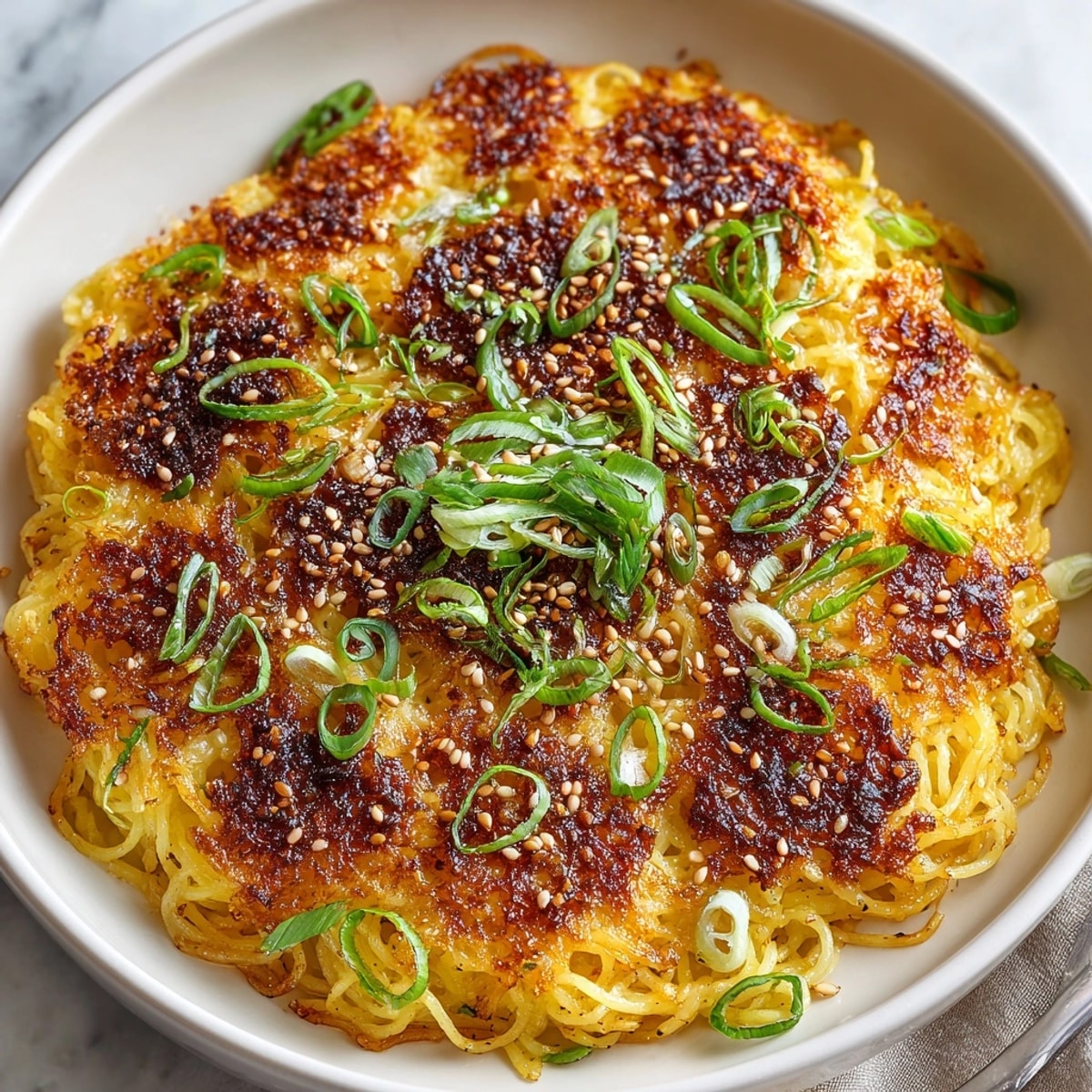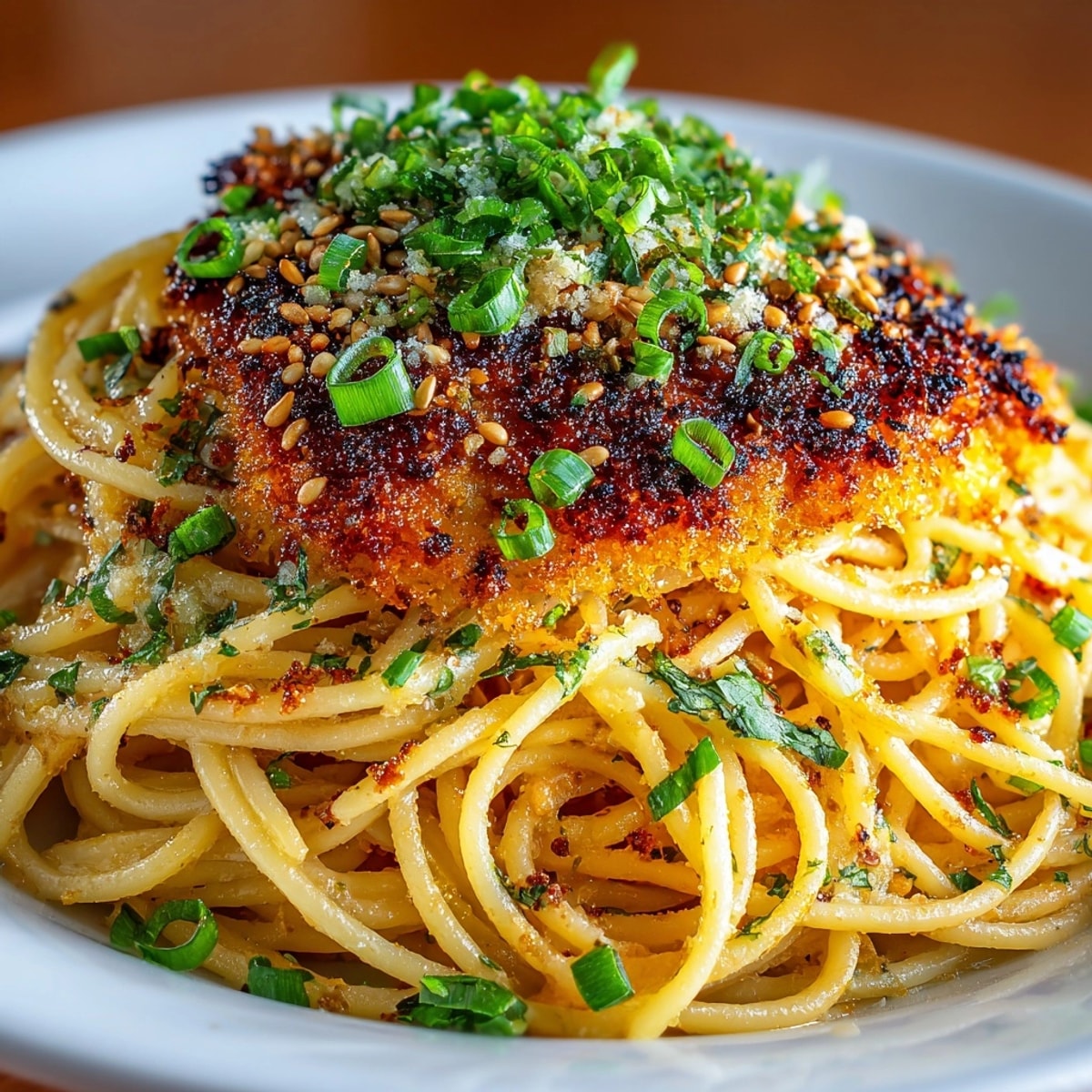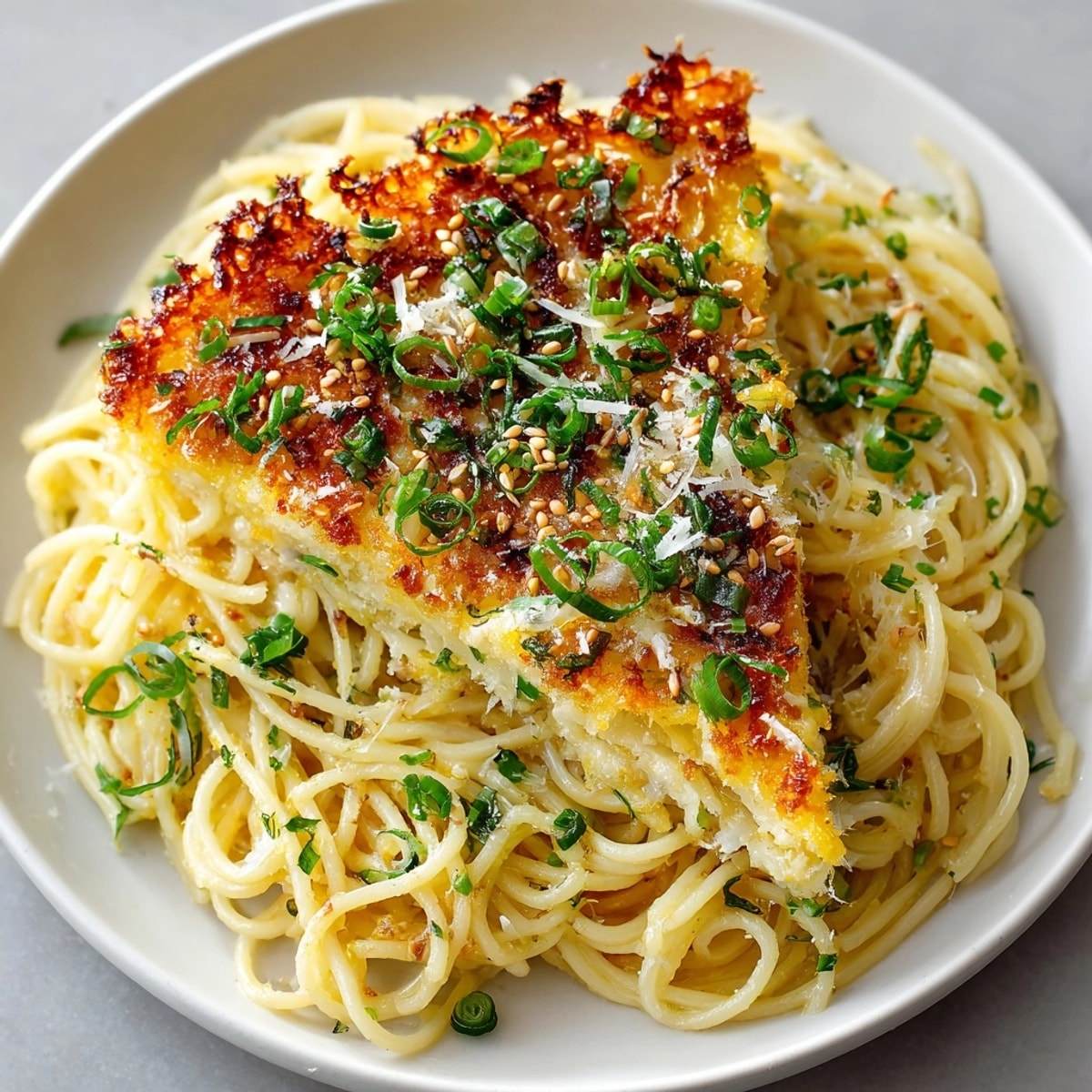 Save
Save This crispy bottom pasta combines Italian simplicity with Korean nurungji technique for an addictive texture contrast that will transform your pasta game forever. The magic happens when perfectly al dente pasta forms a golden, crunchy bottom layer reminiscent of Korea's beloved scorched rice, while the top remains tender and flavorful.
I first created this fusion dish during a particularly uninspired dinner moment when I craved something beyond ordinary pasta. The technique reminded me of the nurungji my Korean neighbor would share from her rice cooker, and now this has become my signature dish when entertaining friends who think they've tried every pasta variation.
Ingredients
- 350 g spaghetti or linguine: Choose bronze die extruded pasta for better sauce adhesion and texture contrast
- 2 tbsp unsalted butter: European style with higher fat content creates a richer crust
- 2 tbsp olive oil: Extra virgin provides flavor while regular olive oil adds crispness
- 2 cloves garlic: minced Fresh garlic is essential for aromatic foundation
- 1 scallion: finely sliced Look for firm stalks with bright green tops for freshness
- 1 tbsp soy sauce: Low sodium preferred to control saltiness
- 1 tsp toasted sesame oil: Pure sesame oil adds authentic Korean nuttiness
- 1/2 tsp freshly ground black pepper: Freshly ground releases more aromatic compounds
- 1/2 cup low sodium vegetable or chicken stock: Homemade stock elevates the flavor profile significantly
- 1/2 cup grated Parmesan cheese: Aged Parmigiano Reggiano creates the best crispy texture
- 2 tbsp toasted sesame seeds: Toast your own for maximum flavor release
Instructions
- Cook the Pasta:
- Bring 1.5 L water to a rolling boil in a large pot. Add 1 tablespoon salt which seasons the pasta from within. Add pasta and cook until just al dente about 1 minute less than package instructions as it will continue cooking in the pan. The pasta should offer slight resistance when bitten. Drain thoroughly but reserve 1/4 cup of the starchy pasta water which helps bind the sauce.
- Prepare the Flavor Base:
- Heat 1 tablespoon butter and 1 tablespoon olive oil in a large nonstick or cast iron skillet over medium high heat until butter is melted and begins to foam. Add minced garlic and sauté for exactly 30 seconds until fragrant but not browned as burnt garlic will impart bitterness. Swirl the pan constantly during this step to prevent burning.
- Combine Pasta and Aromatics:
- Add drained pasta to the pan spreading it in an even layer. Pour in the reserved pasta water which contains starch that helps create cohesion. Add soy sauce for umami depth and half the sliced scallions for aromatic flavor. Drizzle with sesame oil ensuring even distribution and sprinkle with freshly ground black pepper. Toss everything together briefly to coat pasta evenly before settling it into an even layer.
- Create the Crispy Foundation:
- Press pasta gently but firmly into the pan using the back of a wooden spoon or spatula. Pour vegetable or chicken stock around the edges where it will seep underneath. Add remaining butter and olive oil around the perimeter which will melt and flow underneath to promote even browning. If using Parmesan cheese sprinkle it evenly across the surface where it will melt and contribute to the crispy texture.
- Develop the Nurungji Crust:
- Lower heat to medium to prevent burning and cover the pan with a tight fitting lid. Cook undisturbed for 8 to 10 minutes allowing steam to help cook the pasta while the bottom forms a deep golden crust. Listen for a gentle sizzling sound which indicates proper crisping. The liquid should gradually evaporate leaving concentrated flavor behind.
- Finish the Crisping Process:
- Remove the lid and increase heat to medium high for a final 2 to 3 minutes. This evaporates any remaining moisture and develops a deeper crunch. Run a thin spatula around the entire edge of the pasta disk to loosen it from the pan. The pasta should move as a single cohesive disk when the pan is gently shaken indicating it has formed properly.
- Serve with Flair:
- For dramatic presentation invert the pasta onto a large serving platter so the golden crispy side faces up or slide it out maintaining its shape. Immediately sprinkle with remaining fresh scallions and toasted sesame seeds which will slightly wilt from the residual heat releasing more aroma. Slice into wedges like a pizza and serve immediately while the contrast between crisp and tender is at its peak.
 Save
Save The sesame oil is my secret weapon in this recipe. I discovered its transformative power years ago when experimenting with fusion cooking. My Italian grandmother was skeptical until she tried it now she insists I make this whenever I visit. The nutty aroma combined with the toasted notes from the crispy pasta creates a sensory experience that elevates this simple dish to something truly memorable.
Perfecting Your Pasta Selection
The type of pasta you choose significantly impacts the final texture. Long strands like spaghetti or linguine create the most dramatic presentation and satisfying texture contrast. Avoid short pasta shapes like penne or farfalle as they won't form a cohesive layer. Fresh pasta isn't recommended for this technique as it lacks the structure needed to develop a proper crust. The starch content in dried pasta is crucial for binding the crispy layer together.
Troubleshooting Common Issues
If your pasta isn't forming a crisp bottom layer your pan may not be hot enough initially or you might be using too much liquid. The stock should barely reach halfway up the pasta height. Another common mistake is lifting the lid too frequently which releases steam needed for proper cooking. Trust the process and resist the urge to peek more than once during the covered cooking phase. If using a stainless steel pan rather than nonstick add additional oil to prevent sticking.
Cultural Context
This fusion dish honors the Korean tradition of nurungji the prized crispy rice that forms at the bottom of traditional stone rice pots. In Korean households this crunchy layer is often enjoyed as a separate treat or reheated with hot water to make a comforting soup. By applying this technique to Italian pasta we create a cross cultural dialogue on the universal appeal of contrasting textures. The addition of sesame and soy nods respectfully to Korean flavors while maintaining the essence of a satisfying pasta dish.
Seasonal Adaptations
Spring version incorporates blanched asparagus tips and lemon zest
Success Stories
My friend who claims to burn water successfully made this on her first attempt and now prepares it weekly. Another reader substituted gluten free pasta and reported excellent results using a slightly longer cooking time. A college student wrote that this has become his signature dish for date nights because it looks far more sophisticated than the effort required.
Freezer Meal Conversion
While the crispy texture is best enjoyed fresh you can prepare components ahead of time. Cook pasta al dente drain rinse with cold water and toss with a small amount of oil. Refrigerate for up to 2 days. Prepare the garlic scallion mixture separately. When ready to cook simply combine the refrigerated components and proceed from step 3 adding an extra minute to the cooking time to ensure the pasta heats through completely.
 Save
Save This dish offers a delightful fusion of textures and flavors perfect for any occasion. It's a recipe that is sure to impress with its unique preparation and delicious outcome.
Recipe FAQ
- → What does the crispy bottom add to the dish?
The golden crust brings a delicious contrast between tender pasta and a crunchy bottom, elevating both texture and flavor.
- → Can I make this dairy-free?
Yes, simply omit Parmesan cheese and use a dairy-free butter alternative if desired for a vegan-friendly version.
- → Which type of pasta works best?
Spaghetti or linguine work well. Choose a pasta that holds structure and allows for even crisping in the pan.
- → How do I get the perfect golden crust?
Keep the pan undisturbed while cooking and use medium heat with occasional checks. Press the pasta gently into the pan for full contact.
- → What sauces or garnishes go well?
Try fresh scallions, sesame seeds, or even a sprinkle of gochugaru for a hint of spice. Kimchi or cucumber salad make great sides.
- → Can I use other oils besides olive oil?
Yes, neutral oils like canola or avocado work, but sesame oil is essential for that signature aroma and flavor.